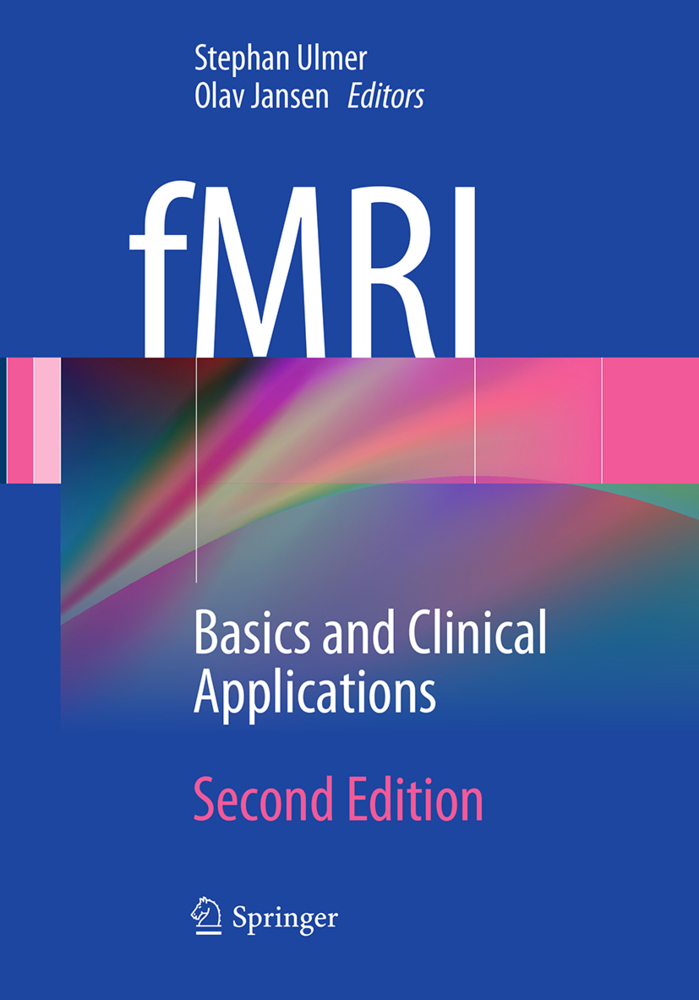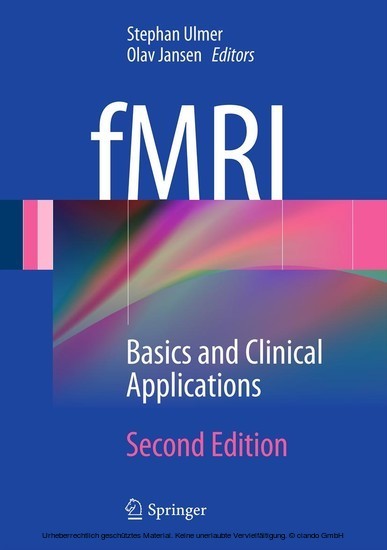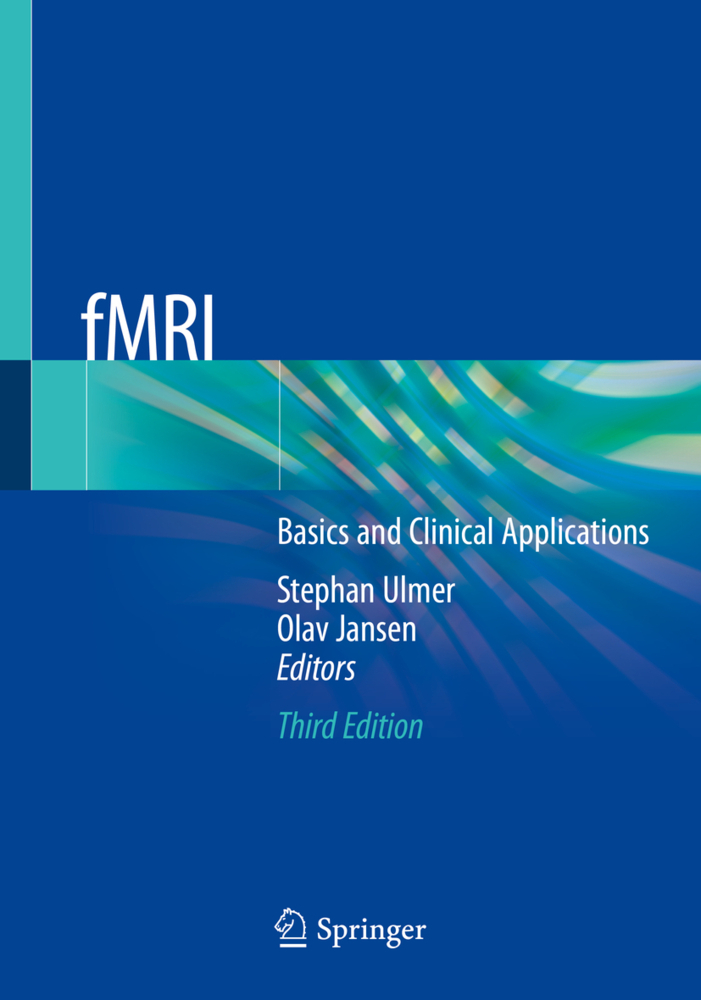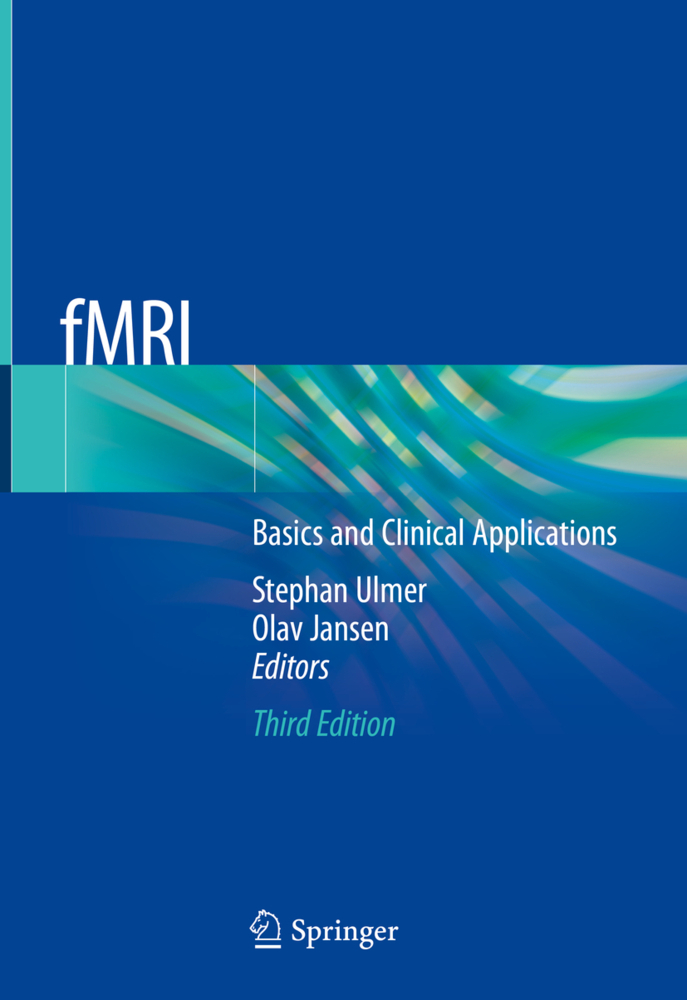fMRI
Basics and Clinical Applications
fMRI
Basics and Clinical Applications
Over the past two decades, fMRI has evolved into an invaluable clinical tool for routine brain imaging. This book provides a state of the art overview of fMRI and its use in clinical practice. Experts in the field share their knowledge and explain how to overcome diverse potential technical barriers and problems. Starting from the very basics on the origin of the BOLD signal, the book covers technical issues, anatomical landmarks, the full range of clinical applications, methods of statistical analysis, and special issues in various clinical fields. Comparisons are made with other brain mapping techniques, such as DTI, PET, TMS, EEG, and MEG, and their combined use with fMRI is also discussed. Since the first edition, original chapters have been updated and new chapters added, covering both novel aspects of analysis and further important clinical applications.
Spatial resolution of fMRI techniques
The electrophysiological background of the fMRI signal
fMRI data analysis using SPM
Meta-analyses in basic and clinical neuroscience: State of the art and perspective
Preoperative blood oxygen level dependent (BOLD) functional magnetic resonance imaging (fMRI) of motor and somatosensory functions
The functional anatomy of speech processing: from auditory cortex to speech recognition and speech production
Use of fMRI language lateralization for quantitative prediction of naming and verbal memory outcome in left temporal lobe epilepsy surgery
Mapping of recovery from poststroke aphasia: comparison of Pet and fMRI
Functional magnetic resonance-guided brain tumor resection
Direct cortical stimulation and fMRI
Imaging epilepsy and epileptic seizures using fMRI
Multimodal brain mapping in patients with early brain lesions
Special issues in fMRI involving children
Modelling connectivity in health and disease: examples from the motor system
fMRI in Parkinson's disease
The perirhinal, entorhinal and parahippocampal cortices and hippocampus: an overview of functional anatomy and protocol for their segmentation in MR images
Simultaneous EEG and fMRI recordings (EEG-fMRI)
Combining transcranial magnetic stimulation with fMRI
Clinical magnetoencephalography and fMRI
Incidental findings in neuroimaging research: Ethical considerations.
Introduction
Neuroanatomy and cortical landmarksSpatial resolution of fMRI techniques
The electrophysiological background of the fMRI signal
fMRI data analysis using SPM
Meta-analyses in basic and clinical neuroscience: State of the art and perspective
Preoperative blood oxygen level dependent (BOLD) functional magnetic resonance imaging (fMRI) of motor and somatosensory functions
The functional anatomy of speech processing: from auditory cortex to speech recognition and speech production
Use of fMRI language lateralization for quantitative prediction of naming and verbal memory outcome in left temporal lobe epilepsy surgery
Mapping of recovery from poststroke aphasia: comparison of Pet and fMRI
Functional magnetic resonance-guided brain tumor resection
Direct cortical stimulation and fMRI
Imaging epilepsy and epileptic seizures using fMRI
Multimodal brain mapping in patients with early brain lesions
Special issues in fMRI involving children
Modelling connectivity in health and disease: examples from the motor system
fMRI in Parkinson's disease
The perirhinal, entorhinal and parahippocampal cortices and hippocampus: an overview of functional anatomy and protocol for their segmentation in MR images
Simultaneous EEG and fMRI recordings (EEG-fMRI)
Combining transcranial magnetic stimulation with fMRI
Clinical magnetoencephalography and fMRI
Incidental findings in neuroimaging research: Ethical considerations.
| ISBN | 978-3-662-50194-8 |
|---|---|
| Artikelnummer | 9783662501948 |
| Medientyp | Buch |
| Auflage | 2. Aufl. |
| Copyrightjahr | 2016 |
| Verlag | Springer, Berlin |
| Umfang | VI, 325 Seiten |
| Abbildungen | VI, 325 p. 107 illus., 85 illus. in color. |
| Sprache | Englisch |









